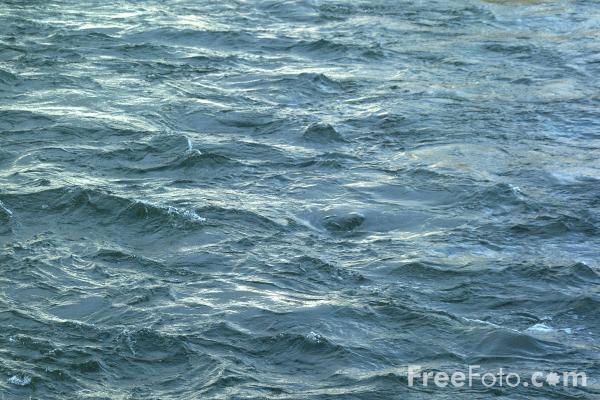Water facts! 
Water on earth is used over and over. The water cycle is the continuous movement of water from ocean to air and land then back to the ocean. In the water cycle, the sun heats the Earth's surface water, causing that surface water to evaporate (gas). This water vapor then rises into the Earth's atmosphere where it cools and condenses into liquid droplets. These droplets combine and grow until they become too heavy and fall to Earth as precipitation (liquid if rain, solid if snow).
Water is temporarily stored in lakes, glaciers, underground, or living organisms. The water can move from these places by streams and rivers, by returns to the oceans, can be used by plants or animals, or evaporate directly back into the atmosphere.
Water covers two-thirds of the Earth's surface. Of the water on Earth, 97% is salt water and is stored in seas and oceans. This means that only 3% of water on Earth is fresh! Of this, most is locked up in icebergs and glaciers and inaccessible for human use. This leaves less than 1% of the water of Earth for people, plants, and animals to use.
What are the three states in which water exists?
Water is continuously cycled between three different states of matter:
Liquid: water (as we see it from taps and in rivers, etc.)
Solid: ice (icecaps, snow, hail, glaciers, and in the freezer)
Gas: water vapour (invisible)
How does water change its state within the water cycle?
Water changes between these 3 states of matter throughout the water cycle using the following processes:
- Evaporation - Here water moves from the surface of the Earth into the atmosphere. Heat from the sun evaporates water from the ocean and other bodies of water, such as rivers, lakes, and puddles. This evaporated water is called vapour and it rises into the air and is then transported by the wind.
- Transpiration - This is the other process whereby water moves from Earth to the atmosphere. Trees, shrubs, grasses and other plants all need water to survive. They take up water from the soil by their roots so that they can grow. Just like in the process of evaporation, the sun creates heat which transpires water into the air through tiny holes in the underside of leaves.
- Condensation - Under certain conditions the water vapour stored in the atmosphere begins to form tiny droplets of liquid water. These droplets are so small that they float in the sky and we see them as clouds. This process is called condensation. Another form of condensation is the formation of water droplets or ice crystals directly on cold surfaces. Examples of condensation on cold surfaces include: water droplets fogging up your bathroom mirror, and dew or frost forming on the ground.
- Precipitation - Precipitation occurs when the water droplets in clouds begin to merge together and become too heavy to stay in the sky. They begin to fall as rain onto the Earth’s surface or if it is cooler, hail, sleet, or snow fall to the ground. The water cycle then begins over again.

